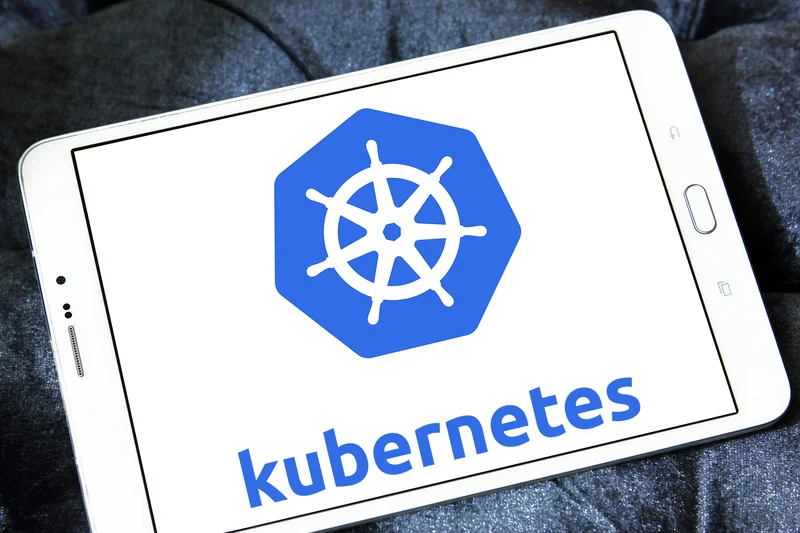It runs within a Docker container on your local system and it’s only for native testing and for development. First you have to container orchestration system activate in Docker Desktop the Kubernetes server. Then you should install some instruments like Kubectl to send command to the Kubernetes cluster. Orchestration in storage refers to the automated management of storage assets, together with provisioning, scaling, and managing knowledge across varied storage techniques to make sure efficiency and reliability. Although Kubernetes is an open-source resolution, re-architecting an IT environment is commonly costly.
Simplifies Installation And Deployment
Containerization is a modern answer to the problems that bodily hardware limitations may cause. By packaging software into remotely-accessible containers, it’s attainable to bypass restrictions and run an working system in the public cloud and from other areas. The classic confinement flag permits microk8s to assist deployment of unconfined container images. Let‘s get started with container orchestration via MicroK8s – which stands up a production grade K8s cluster merely inside containers. As you probably can machine learning see, orchestrators have advanced for varied infrastructure needs ranging from baremetal edge gadgets to complicated multi-cloud enterprise environments.
Why Are Orchestration Instruments In Devops Essential
However, whereas Kubernetes is the industry standard, it may additionally be challenging to deploy, handle, and safe. Container orchestration allows for quicker and repeatable app improvement. It can adapt to various necessities, supporting continuous integration/continuous deployment (CI/CD) pipelines, knowledge processing functions, and the development of cloud-native apps.
The Panacea: Design A Safe Container Orchestration Technique
Note that for CPU, the workload is throttled when trying to use greater than this instance. If the nginx server is making an attempt to make use of a couple of CPU, it’s limited. If the memory request goes over the restrict, the kernel will kill the method with an out of reminiscence error. If this occurs, an occasion is captured and reported back to Kubernetes, which is accessible in the pod event logs.
How Acumera® Is Remodeling Restaurant Expertise With Edge Computing
Kubernetes is an open-source orchestration platform for managing containers within the enterprise setting. Platforms that use Kubernetes are rapidly-growing and highly-supported, with operators that can configure storage orchestration and automate containerization processes to their very own specs. This makes them extremely light-weight (~50X less than VMs), close to bare-metal performance, and far more resource efficient. The trade shortly realized containers could revolutionize app deployment and microservices architectures. Mesos is a popular choice for operating Docker containers in manufacturing environments as a result of it’s easy to arrange and manage. Still, it requires you to make use of a separate server out of your utility container (which may be problematic should you use multiple containers).

Similarly, a container orchestrator can configure, deploy, and scale containerized functions to ensure accurate and smooth operations. Using containers successfully boosts the pace at which an software is developed, deployed, and up to date. Using containerized microservices permits builders to break up monolithic software program architecture into small, easy-to-manage parts. Tech teams can deploy, update, or retire particular person container-powered microservices independently without the necessity to modify and redeploy the entire utility. Container orchestration ensures uptime and availability by mechanically detecting and addressing infrastructure failures. If a container fails, the container orchestration solution ensures software uptime by automatically restarting or replacing failing containers.
- Kubernetes is a powerful container orchestration system that allows you to specify how functions ought to be deployed, scaled, and managed.
- An orchestrator automates scheduling by overseeing resources, assigning pods to particular nodes, and helping to ensure that resources are used effectively within the cluster.
- It was challenging, for example, to manage the community communication amongst multiple containers and to add and take away containers as needed for scaling.
- At its core, containerization entails packaging code along with its dependencies and libraries in a method that allows for it to be executed uniformly and consistently across computing platforms.
Container orchestration platforms present automated updates and rollbacks, enabling developers and directors to deploy new versions of their applications with confidence. If an replace causes issues, the device can mechanically roll again to the previous version to reduce the impact on customers. Containers are already lighter than conventional software functions as they don’t embody OS pictures. Apart from this, they’re easier to run and manage than digital machines for users working in virtualized environments.
Updates may be time-consuming but help address newly introduced vulnerabilities. Instead of making new photographs from scratch, you possibly can reuse only some parts. However, the code or images you employ, alongside their dependencies, might have safety vulnerabilities. One approach to mitigate this risk is to implement stringent checks to establish safety vulnerabilities. Administrators ought to incorporate security mechanisms into the CI/CD pipeline, code vulnerability scans throughout all levels of the pipeline. While choosing the right container technology for an organization may appear difficult, it isn’t an inconceivable task.
Container orchestration is the follow of automating the deployment, administration, scaling, and networking of containers. In large-scale environments, the place tons of or 1000’s of containers run concurrently, manual management quickly gets inefficient and impractical. Container orchestration instruments provide the required automation to manage these complicated environments, making certain that containerized applications run easily and efficiently.

Orchestration additionally helps make sure the high availability of containerized applications by mechanically detecting and responding to container failures and outages. Dirk delivers executive management for Acumera’s staff, offering managed community safety and automation companies for the payment systems and operations of multi-site companies. Before founding Acumera, Dirk served as vp of operations at Wayport and senior vp of operations for Multimedia Games. Container orchestration addresses these challenges by automating container management within clusters. It streamlines deployment, scaling, load balancing, and fault tolerance. This automation ensures environment friendly and seamless operation.
This permits growth groups to focus on higher-value tasks, augmenting the development process and making testing, patching, manufacturing, and deployment quicker and extra correct. Developers leverage containerization for developing and deploying functions more shortly, effectively, and securely than traditional methods. Simply put, containerization permits developers to put in writing the code for an utility as quickly as and then run it wherever they need. Containerization is similar to virtualization and can serve instead for it. Docker containers have their native orchestration platform, Docker Swarm. It’s less complicated to set up and use than Kubernetes, making it an excellent option for newbies or smaller deployments.

At its core, containerization involves packaging code together with its dependencies and libraries in a means that allows for it to be executed uniformly and persistently throughout computing platforms. Moreover, the need for comprehensive safety extends past the tools themselves, encompassing varied features of the container lifecycle, together with photographs, registries, deployments, runtime, and more. Continuous monitoring and compliance assessments are also essential in mitigating both recognized and unknown safety threats.
When an orchestrator is on the market, containers in an software can all communicate efficiently with one another by way of the orchestrator (as opposed to communicating with one another directly). Orchestration allows a containerized utility to handle requests effectively by scaling up and down as wanted in an automated means. The following are some challenges of container orchestration. Use instruments like Aqua Security or Twistlock to scan images for vulnerabilities before deploying. Implement Role-Based Access Control (RBAC) in Kubernetes to enforce the principle of least privilege.
The container orchestration resolution can monitor efficiency throughout the container network and routinely reconfigure containers for optimal performance. Container orchestration has turn out to be an important part of modern application improvement and deployment. As organizations transition to microservices architectures, the complexities of managing these containerized applications grow.
Transform Your Business With AI Software Development Solutions https://www.globalcloudteam.com/ — be successful, be the first!